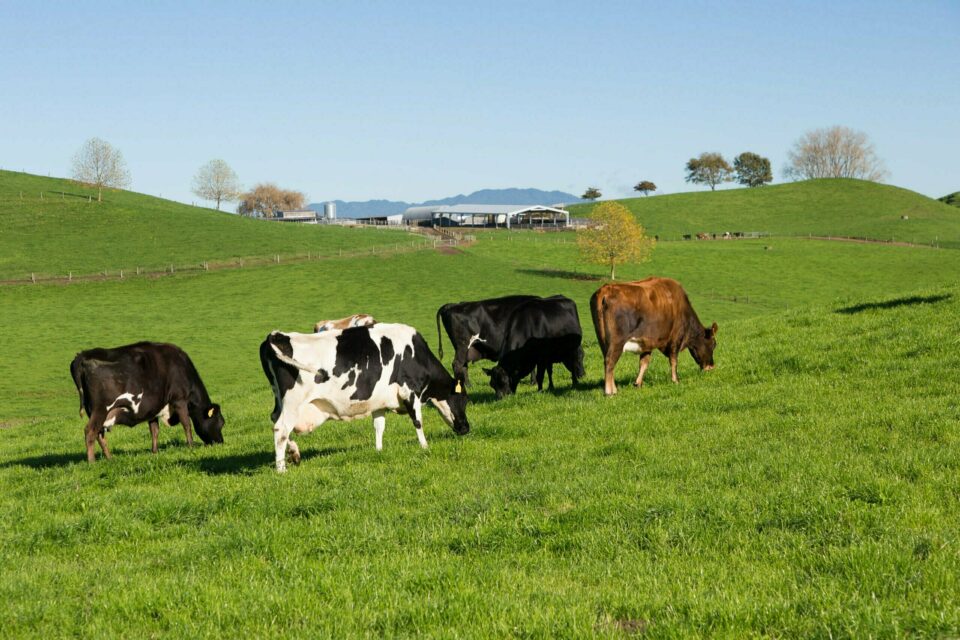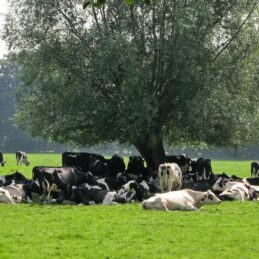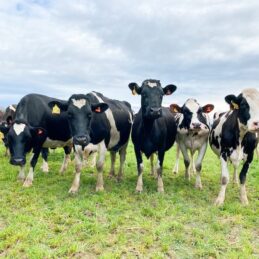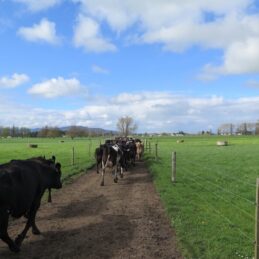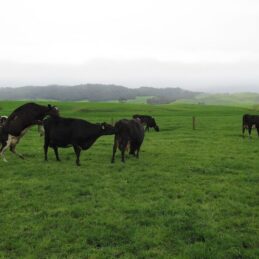It can be easy to think of dry cows as a group of animals ‘on holiday’, who don’t need much by way of nutrition. However, this time is one of the most critical stages of her lactation to get right. A recent Cow Manager roadshow for example highlighted that around 85% of all health alerts during lactation came from issues with cows in the dry/springer periods, meaning it is a good time to invest in the health and wellbeing of your herd.
While managing body condition score is often easier and more energetically efficient while the cow is milking, often our wintering diets are designed to gain weight, especially in the first part of the dry period. Some rough numbers tell us it is going to take ~3000MJME to put on a condition score1, which on a 60-day dry period only leaves 20-30 days to do it by the time cows are wound down for drying off, transitioned onto dry cow crop or feeds, and then transitioned off to start their springer diet. This means +62MJME is required each day to achieve a 0.5 condition score gain, making total daily ME requirements around 172MJME2, or 15.6kgDM eaten, a significant ask depending on the physically effective NDF value and utilisation % of the winter feed.
While energy is the primary concern for body condition gain, protein balance is also important, with failure to provide adequate protein impacting udder repair, immune function, risk of transition diseases (such as retained placenta, metritis, mastitis), calf development and future potential milk production. Heifers can be very susceptible to protein-energy malnutrition due to their higher protein requirements for growth, especially in cold conditions and can be the first to go down in the dry mob3. An absolute minimum of 14% crude protein is required during the dry period, with requirements for protein increasing through the dry period.
If feeding winter crops, the number one reason cows do not apparently do well on crop is underestimating the amount of crop on offer, overestimating the DM% of the crop and overestimating the utilisation of crop. Therefore, getting good yield estimates from your agronomist is essential. The energy and protein demand then need to be balanced by crop yields (you are going to have to get through the crop!) and fibre quality. It is often a tricky balance to achieve, but it can be done with good nutrition and forage advice from your Nutritech Area Manager and using programmes like DietCheck®.
Practically it can be challenging to feed minerals during the dry period, especially if cows are grazed off the dairy platform. However, with technologies like DanMix® loose licks there are still ways we can ensure the cow’s mineral needs are met. Minerals that can be significantly depleted during the dry period are copper, selenium and iodine.
Pregnant cattle in late gestation are at particular risk of copper deficiency because the calf preferentially accumulates liver copper reserves during the last few weeks of pregnancy. Brassicas are more likely to induce copper deficiency in cattle than non-brassica feeds, (a) because they are low in copper and (b) because high sulphur levels in brassicas further challenge the uptake of copper from the gut. The formation of complexes between dietary copper and sulphur reduces the utilisation of dietary copper by the cow. The ingestion of soil during winter grazing further depletes the copper reserves of pregnant cattle. Soil contains high concentrations of iron, and iron interferes with copper uptake from the gut of the cow. This is where organic copper is very beneficial to help reduce the risk of interferences and improve copper status for cows grazing during winter conditions.
Low selenium is typical of many winter feeds, and low selenium status can also reduce the iodine status of the cow. Low iodine is a particular risk for cows grazing brassica due to not enough iodine being present in the feed or secondary iodine deficiencies (caused by compounds called goitrogens blocking the uptake of iodine by the cow’s thyroid gland).
It is also important to remember that some minerals are transferred from cow to calf, including phosphorous, copper, selenium and vitamins A and E. Deficits in these can have significant impacts on the calf. For example, recent DairyNZ work4 has shown calves born to fodder beet dams were lighter, shorter and had a smaller girth, likely due to mineral and protein deficiencies.
Nutritech has a range of dry cow minerals and vitamins to suit your wintering system, designed to address typical deficiencies. These include NutriMin® Fodder Beet Balancer, DanMix® Dry Cow, NutriMin® Maize Silage Balancer, AquaTrace®5 Hoof n’ Udder and custom formulations specific for your herd’s wintering programme.
Lastly, now is a good time to consider how best to manage to get your springer cows from the dry mob to the springer mob. Most often this is done visually, but this can increase the risk of milk fever by cows not having enough time on their springer diet. Having mobs split by calving date can help by making it easier to find and draft out early calvers, as can drafting twice a week, using tail paint at dry off to colour-code drafting batches, or whatever system is going to suit your farm.
For any support or advice on your dry and springer cow programmes, please get in touch with your local Nutritech Area Manager.
- 475kg FxJ 43kgLWT/Condition score at 72MJ/kgLWG = 3,096MJME/CS
- 65MJME/Maintenance + 35MJME for pregnancy + 10MJME for additional walking between paddocks or grazing winter crops
- Dairy Australia www.dairyaustralia.com.au/feed-and-nutrition/feeding-the-herd/dairy-cow-nutrition/dry-cow-nutrition
- Dawn Dalley, Dairy wintering research: Winter Grazing Seminar 2021

